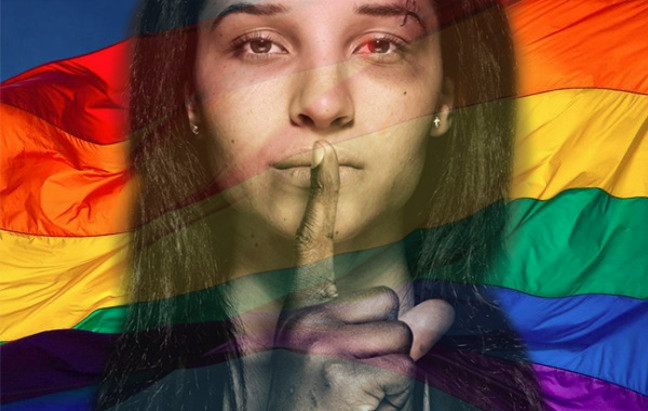by Michael F. Haverluck
After conducting an extensive study on homosexual behavior, the Centers for Disease Control (CDC) reports that those involved in such lifestyles experience a far greater amount of violence from one another than those in heterosexual relationships. As you can see, the numbers don’t lie, and love doesn’t win.
CDC’s National Intimate Partner and Sexual Violence Survey is a first-of-its-kind study geared to determine the difference between the victimization of men and women by sexual orientation. The results show that men and women involved in homosexual behavior undergo much higher rates of sexual violence than men and women who are heterosexual.
Surprising to many, homosexual women experience more violence than men. According to the study, a whopping 44 percent of lesbians were either raped, experienced physical abuse, and/or were stalked by their intimate partners during their lifetime. Even more shockingly, 61 percent of bisexual women endured such violence from their partners.
It is also reported that 37 percent of bisexual women indicated they were stalked, which is more than double the rate that heterosexual women experience from their male partners. Furthermore, the CDC found that 37 percent of bisexual women were injured during the rape, physical violence, and/or stalking that they experienced at the hands of their sexual partners.
Tragically, 48 percent of bisexual women who reported that they were raped said that their first experience of being raped occurred when they were adolescents between the ages of 11 and 17.
The research also shows that 26 percent of homosexual men experienced rape, physical violence and/or stalking by their intimate partners. It’s even higher for bisexual men, who experience these types of assaults at a rate of 37 percent.
Refusing to interpret the numbers?
Refuting many of the claims by LGBT activists that homosexual behavior is a natural biological condition, the CDC report found that a large percentage of homosexual transgenders and bisexual women experienced sexual violence during their childhood years, which could have likely resulted in their choices in adulthood to adopt a homosexual lifestyle. Even though the government agency would not make an official determination that such early exposure to sexual violence was the cause of men and women ultimately choosing to engage in homosexual behavior, the statistics themselves appear to point to such a connection.
However, despite the numbers indicating otherwise, the homosexual activist organization Human Rights Campaign (HRC) claims that “poverty, stigma, and marginalization” are the cause of sexual violence.
“We also face higher rates of hate-motivated violence … the ways in which society … stigmatizes our relationships can lead to intimate partner violence that stems from internalized homophobia and shame,” the HRC alleges.
However pro-family media outlets point out that those advocating traditional values are quick to bring light to the fact that those engaging in homosexual behavior often come from a violent past.
“[C]ritics of the gay agenda say violence is intrinsic to the inner-conflicted homosexual orientation,” Lifenews.com’s Mark Hodges reports. “[C]ritics say sodomy itself is a violent act of hate, not love, and the high rate of violence among homosexuals is not surprising.”
Even LGBT leaders have conceded that those in the homosexual community tend to ignore the prevalence of sexual violence between its members.
“Until recently, [LGBTQ] intra-community sexual assault went largely unacknowledged, particularly for women who have sex with women,” National Center for Lesbian Rights Reproductive Justice Fellow Lauren Paulk admitted. “A particularly disturbing dynamic arises when the assaults are perpetrated by other LGBT community members.”
Paulk says that the LGBT community has rationalized or ignored such violence for various reasons.
“Denial, misrecognition and the dismissal of outside-the-community concern as latent homophobia are examples of responses to sexual assault that occurs between members of the LGBT community,” the homosexual activist explained. “Survivors of assault may not know where to turn, either because they fear they will not be believed or supported, or because they do not want to malign another member of the community or reinforce negative stereotypes.”
